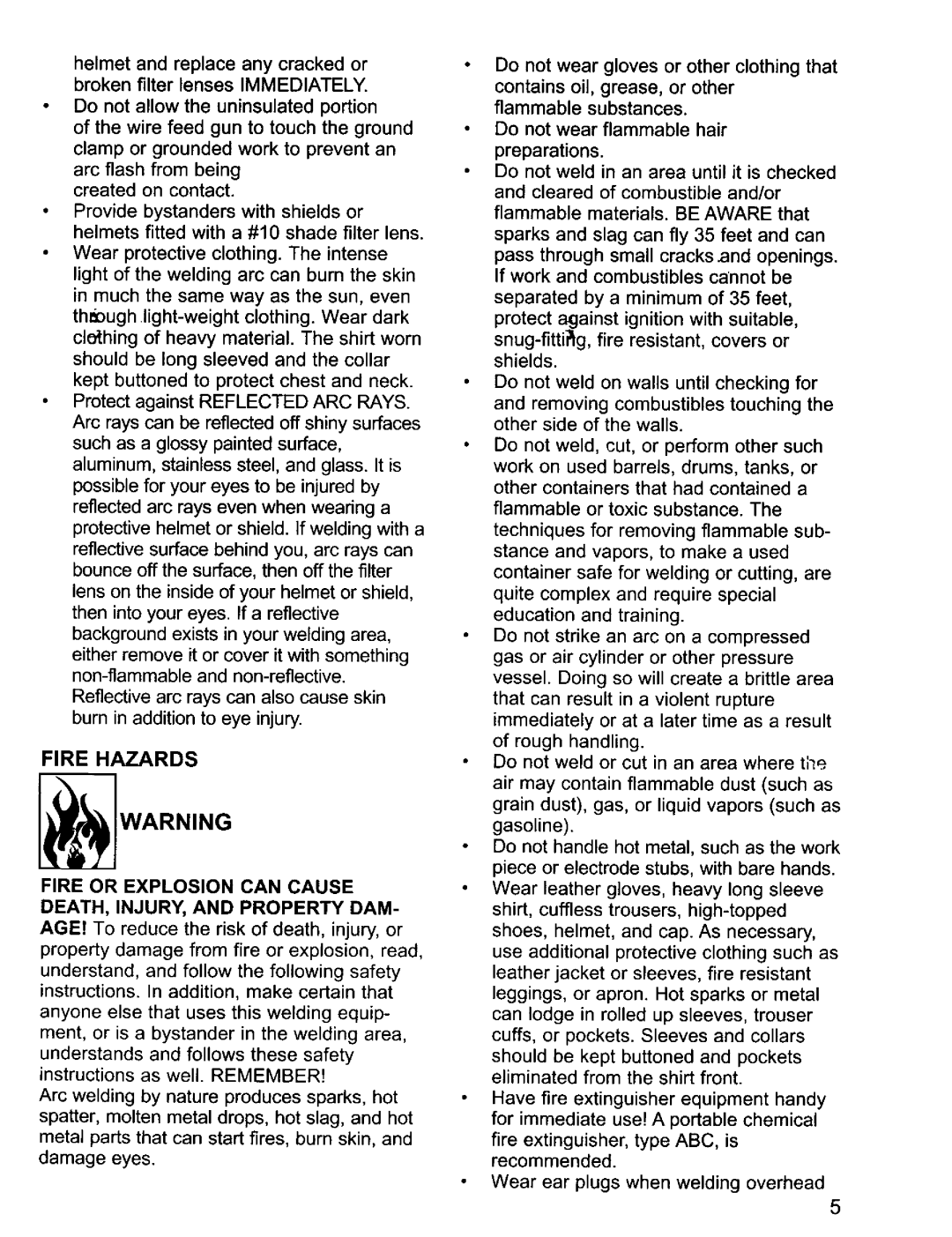
helmet and replace any cracked or broken filter lenses IMMEDIATELY.
Do not allow the uninsulated portion
of the wire feed gun to touch the ground clamp or grounded work to prevent an arc flash from being
created on contact.
Provide bystanders with shields or helmets fitted with a #10 shade filter lens.
Wear protective clothing. The intense light of the welding arc can burn the skin in much the same way as the sun, even through
FIRE HAZARDS
WARNING
FIRE OR EXPLOSION CAN CAUSE
DEATH, INJURY, AND PROPERTY DAM-
AGE! To reduce the risk of death, injury, or
property damage from fire or explosion, read, understand, and follow the following safety instructions. In addition, make certain that
anyone else that uses this welding equip- ment, or is a bystander in the welding area, understands and follows these safety instructions as well. REMEMBER!
Arc welding by nature produces sparks, hot spatter, molten metal drops, hot slag, and hot metal parts that can start fires, burn skin, and damage eyes.
•Do not wear gloves or other clothing that contains oil, grease, or other
flammable substances.
•Do not wear flammable hair
preparations.
Do not weld in an area until it is checked and cleared of combustible and/or flammable materials. BE AWARE that sparks and slag can fly 35 feet and can
pass through small cracks.and openings. If work and combustibles cannot be
separated by a minimum of 35 feet, protect against ignition with suitable,
•Do not weld on walls until checking for
and removing combustibles touching the other side of the walls.
•Do not weld, cut, or perform other such work on used barrels, drums, tanks, or other containers that had contained a flammable or toxic substance. The techniques for removing flammable sub- stance and vapors, to make a used container safe for welding or cutting, are quite complex and require special education and training.
Do not strike an arc on a compressed gas or air cylinder or other pressure vessel. Doing so will create a brittle area that can result in a violent rupture immediately or at a later time as a result of rough handling.
Do not weld or cut in an area where the air may contain flammable dust (such as grain dust), gas, or liquid vapors (such as gasoline).
Do not handle hot metal, such as the work piece or electrode stubs, with bare hands.
•Wear leather gloves, heavy long sleeve shirt, cuffless trousers,
should be kept buttoned and pockets eliminated from the shirt front.
Have fire extinguisher equipment handy for immediate user A portable chemical
fire extinguisher, type ABC, is recommended.
Wear ear plugs when welding overhead
5
